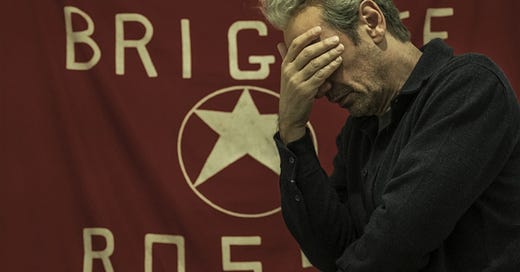This review is synchronized in German and Italian.
Marco Bellochio has succeeded in making a remarkable piece of television with his six-part miniseries "Esterno Notte" about the fifty-five days between the kidnapping and murder of Aldo Moro. With the decision to roll out this so complex material, which is interwoven with countless theories, conspiracy narratives and micro-histories, into six episodes, "Esterno Notte" differs pleasingly from other attempts, of which "Moro Affair" (with the Silver Bear at the 1987 Berlinale for Gian Maria Volonté) is to be mentioned as a successful feature film.
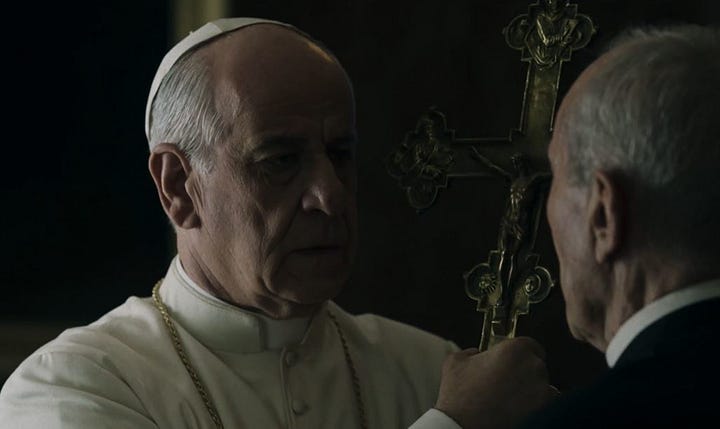
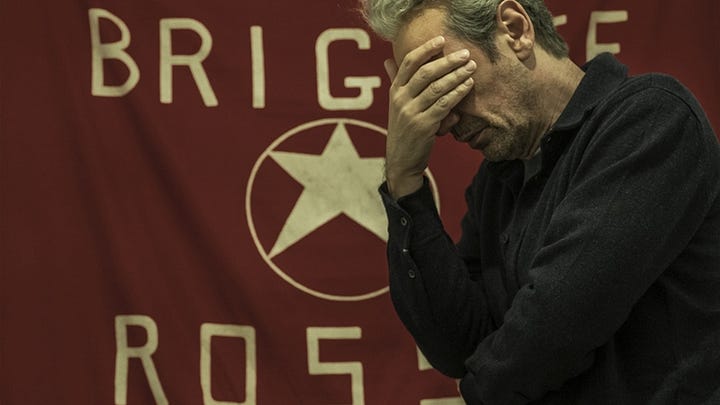
Bellochio gives the supposed minor characters the space they need to portray the complexity of this Italian tragedy. Daniela Marra as brigadier Adriana Faranda is wonderfully cast, as is Margherita Buy (Eleonora Moro/Chiavarelli). Moreover, Bellochio deliberately savours artistic freedom, filling in gaps here and there that are important to him with alternative progressions: What if Moro had been released from the people's prison in Via Gradoli? The ice-cold glances that Moro and Giulio Andreotti dignify each other with in the fictitious hospital visit open up the space for productive speculation about how this Italy can continue politically after this existential breach of trust between Moro and his Christian Democratic party. On television, the seriously ill Pope Paul VI (Toni Servillo, as always of the best) fantasises about a procession of the Democrazia Cristiana, with Moro carrying the cross and thus the sins of the political class. Either as penance or to feel the suffering of Moro's Passion, Paul has a metal penitential belt put on him, leaving bloody wounds. The staging of resistance and confrontation of the communist movement and the visible isolation of the Red Brigades in the entire Italian left, whether moderate or radical, seems authentic and not costumed - something that is by far not often to be said about the portrayal of the political climate in the late 1970s in film and television.
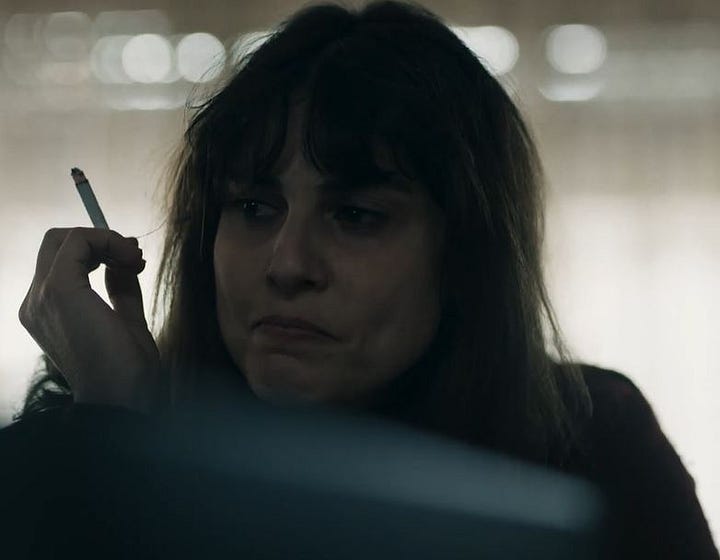
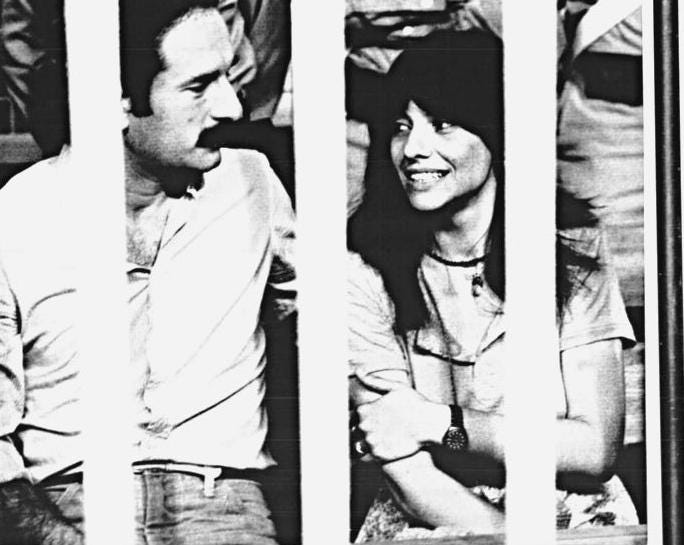
For all its alternative courses, however, the series fortunately avoids diving into the sheer incomprehensible plethora of "cui bono" narratives that have contributed not more but honestly less to clarification over the past 45 years. What was the role of the CIA, the KGB, the Czechoslovakians?1 Was the RAF at the scene of the kidnapping2, and did the US's then decades-old plans3, to be understood as reservations of intervention, include the assassination of politicians of centrist state-supporting characters? Bellochio does not get involved in such gimmicks any more than he gives Andreotti ("Beelzebub", Paolo Sorrentino's "Il Divo") and "the Americans" space to create a decoy of evil powers.
Much more interesting than the "cui bono" is why the Democrazia Cristiana did not do everything possible to get Moro released4, when there was probably also the window of opportunity, from vast amounts of available ransom money from Vatican sources, for the Red Brigades not to know what to do with Moro - who was hardly personally suited as the incarnation of an all bad.
Moro may have been tragically mistaken in thinking that Western Europe's strongest Communist Party could be installed in Italian government without considerable resistance and thus be used. On the other hand, with his disappointment and anger towards his fellow party members, he was speaking political prophecy:
If you do not intervene, a frightening page could be written in the history of Italy. My blood would come over you, over the party, over the country.5
Very different from the aftermath of the Schleyer kidnapping in West Germany, Moro's murder permanently changed Italy's political system. After Moro, "the left was finished"6 - and not only the Brigate Rosse - but also the Christian Democratic Party. While they had embedded themselves in power structures until the fall of communism (Andreotti and the socialist Craxi as prime ministers, Cossiga as president), they crumbled after 1990 due to the collapse of the Eastern bloc (Communist Party) or corruption scandals (Socialists/Christian Democrats) and took the entire political system with them. The Mafia murders of Paolo Borsellino and Giovanni Falcone and the founding of Forza Italia marked the end of the First Republic, which had already been fatally wounded by the shots fired into the boot of a red Renault 4 on 9 May 1978.
"Esterno Notte" tells of this trauma, which to this day has not been conclusively dealt with despite a truth commission. With the miniseries format, Bellochio has succeeded in approaching the complex appropriately without getting lost in tedious details or dwelling on conspiracy theories.
A clear recommendation. 4 out of 5 coffee cups.
„Esterno Notte“, Sceneggiatura e regia: Marco Bellochio, 6 episodi, tedesco, francese, originale (italiano) con sottotitoli in francese. arte mediateca fino al 12 luglio 2023.
As a example: Regine Igel, “Linksterrorismus
fremdgesteuert? Die Kooperation von RAF, Roten Brigaden, CIA und KGB”, Blätter für deutsche und internationale Politik, Jg. 52, 2007, S. 1221-1235, online: https://zeitgeschichte-online.de/sites/default/files/documents/igel0710_0.pdf
Ferdinando Imposimato, “I 55 giorno che hanno cambiato l’Italia. Perché Aldo Moro doveva morire? La storia vera.” (ebook), Roma, 2013, pp. 66-80.
Ronald D. Landa, "Shots from a Luce Cannon: Combating Communism in Italy, 1953-1956”, Historical Office of the Office of the Secretary of Defense, Washington D.C, 2012; declassifed online: https://nsarchive.gwu.edu/briefing-book/intelligence/2017-02-07/cia-covert-aid-italy-averaged-5-million-annually-late-1940s
Federica Matteoni, “Die unbequeme Geisel”, in: jungle world, 16/2018, https://jungle.world/artikel/2018/16/die-unbequeme-geisel
Letter of Aldo Moro to the Secretary of the DC Benigno Zaccagnini, 20th April of 1978, printed in the edition: Aldo Moro, “Lettere dalla prigionia.”, A cura di Miguel Gotor, Torino, 2018, pp. 70-74.
Marco Damilano, “Un atomo di verità. Aldo Moro e la fine della politica in Italia.” (ebook), Milano, 2018, pp. 198-201.


